
Why this iconic 1839 painting is not what it seems
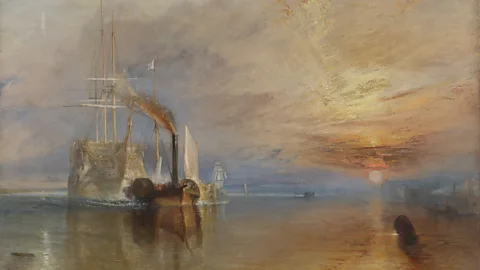 The National Gallery, London(Credit: The National Gallery, London)
The National Gallery, London(Credit: The National Gallery, London)As museums around the world celebrate the 250th birthday of JMW Turner, it's time to reappraise his beloved and celebrated painting, The Fighting Temeraire.
JMW Turner's The Fighting Temeraire became a national celebrity when it was first unveiled in 1839, and its fame has endured to the present day. It was once voted Britain's favourite painting and currently features on £20 banknotes. But the widely accepted interpretation of this iconic painting's message might, in fact, contradict Turner's true intentions.
The "Temeraire" of the title refers to a 98-gun warship of the British Navy, which is depicted in the painting's background. It was a hero in Britain's defence against France during the Napoleonic Wars, but it caught the nation's attention in 1838 when it was dismantled and its parts sold off. Turner's painting depicts this once-mighty gladiator of the seas being towed down a burnished River Thames by a much more recently invented steam-powered tugboat.
A brief segment in the 2012 James Bond film Skyfall captures a popular view about the painting. In the scene, Bond (Daniel Craig) meets Q (Ben Whishaw), his new head of research and development, in London's National Gallery, and they sit in front of The Fighting Temeraire. "It always makes me feel a little melancholy", says the young, tech-savvy Q, in a pointed jibe to 007, an old-school field agent. "A grand old warship being ignominiously hauled away for scrap."
This echoes the widely held belief that the painting evokes a sense of nostalgia and faded national glory. According to this view, the ghostly Temeraire is the painting's heroine, and the tugboat its villain. In the 19th Century, the English writer William Makepeace Thackeray referred to the smaller vessel as "a little, spiteful, diabolical steamer" and the American novelist Herman Melville called it "a pygmy steam-tug" by comparison to the "Titan Temeraire".
 The National Gallery, LondonA common belief about Turner's The Fighting Temeraire is that it evokes a sense of faded national glory (Credit: The National Gallery, London)
The National Gallery, LondonA common belief about Turner's The Fighting Temeraire is that it evokes a sense of faded national glory (Credit: The National Gallery, London)You can see why Turner's original audience may have sympathised with the humbled HMS Temeraire and been saddened by her fate. Back in 1804, she had played a critical role in blockading French ports and defending the British coast. But her finest moment came on the afternoon of 21 October 1805, in the Atlantic Ocean, just off the coast of south-west Spain.
At this pivotal hour, the Battle of Trafalgar, a deadly sea battle between the British Royal Navy and the combined fleets of Spain and France, was at its climax. Admiral Lord Nelson's flagship HMS Victory had led the attack but was being pummelled by the French vessel Redoubtable. Then, out of the cannon smoke, surged HMS Temeraire, followed by a war-hungry flotilla of British vessels. The Temeraire blasted the Redoubtable with her guns and endured a hailstorm of cannon volleys in return – an onslaught that lacerated the ship and spattered her decks with blood. But like a stalwart prize-fighter, the Temeraire weathered the bout. She valiantly protected her flagship and played a vital part in the British navy's ultimate victory in the Battle of Trafalgar.
Finding beauty in newnessTurner was 64 when he painted The Fighting Temeraire. He was born in 1775 in a down-at-heel area of London near Covent Garden but managed to enrol at the prestigious Royal Academy of Arts aged 14. He became an Academician at the precocious age of 24, and a Professor of Perspective when he was just 32. But although he rubbed shoulders with the great and the good, he refused to soften his Cockney accent or refine his manners. He was also fiercely entrepreneurial – he opened his own private gallery, sought wealthy patrons, and was always on the lookout for captivating and lucrative new artistic projects that might have widespread appeal. On one level, The Fighting Temeraire achieves his desire for broad popularity by harnessing people's sense of national pride.
By hitching the old and the new so unforgettably in his painting, he shows us a compelling metamorphosis – the beginning of a new, post-industrial lifecycle in human historyBut there's an even more important message to learn from the painting than its patriotism and sentimentality. It concerns that much maligned tugboat: the true focal point of the painting.
Steam power was the new mechanical wonder of Turner's age, and his attitude to this recent technology was much more complicated than Thackeray, Melville or Q recognised. In other Turner artworks, like Snow Storm – Steam-Boat (1842) and Rain, Steam and Speed (1844), you can see his fascination with modern machinery and its transformative influence on individual experience, the environment, and society as a whole. This is in stark contrast with Turner's great rival John Constable, whose parents were from the elite, and whose paintings tended to overlook some of the most seismic changes that were reshaping the British Isles at the time.
In Constable's iconic 1821 painting The Hay Wain, an archaic cart rolls gently away from the viewer into a bucolic English landscape. Turner's The Fighting Temeraire gives us the exact opposite, putting the spectator on a collision course with the unstoppable force of industry.
 The National Gallery, LondonWhereas John Constable depicted the British countryside as calm and picturesque, Turner embraced the changes affecting society in his art (Credit: The National Gallery, London)
The National Gallery, LondonWhereas John Constable depicted the British countryside as calm and picturesque, Turner embraced the changes affecting society in his art (Credit: The National Gallery, London)This reflected contemporary reality. At the time The Fighting Temeraire was painted, the Royal Navy was increasingly using steamboats for towing bigger vessels. Moves were already afoot to replace its sail-powered fleet with new steam frigates. But the demise of the Temeraire didn't reflect a routine upgrade in armaments. This was a one-of-a-kind revolution in seafaring. Sailors around the world had relied on wind-and-sail or oar-propulsion for thousands of years. Now, steam engines could allow seafarers to overcome the vagaries of gusts, shallows and tidal patterns – to supersede nature itself. The future was steam-powered, but how this was going to affect the future of transport, trade and naval combat was still anybody's guess in the 1830s. What Turner did know was that as far back as Homer's Odyssey, sailing functioned as a profound symbol of the life journey in art and literature. And so, by hitching the old and the new so unforgettably in his painting, he shows us a compelling metamorphosis – the beginning of a new, post-industrial lifecycle in human history.
Turner was awake to the responsibility of artists in times of irreversible historical change. For him, the age-old skill of depicting wooden sailing ships, their rigging, sails and ornately carved figureheads was becoming obsolete. The challenge for every artist (and every member of society) in the modern age, he realised, was to discover beauty and significance in newness, and in artefacts that had not previously been depicted in art, like iron funnels, pistons, valves, and paddle wheels. In The Fighting Temeraire, his rise to this challenge is captured in a very memorable and uncompromising symbol.
More like this:
• The forgotten Monet finally getting her moment
• The schmaltzy paintings that divided the US
• The surprising story of Van Gogh's guardian angel
Turner even adapted his painting technique to express the technological and social transformations in the world around him. He used newly invented paint hues like Lemon Yellow and Scarlet Lake in The Fighting Temeraire. Pigment analysis of the painting also indicates that he raided from his kitchen for substances to add his paint to achieve desired effects, like tallow, cooking fat or even salad oil.
His interest in new technology, and his search for innovative techniques with which to represent them, had a direct impact on the next generation of avant-garde painters. Claude Monet and Camille Pissarro were both wowed by Turner's art. An engraving of Turner's Rain, Steam and Speed (which depicts a train hurtling over Maidenhead bridge) was even displayed at the first Impressionist Exhibition in Paris in 1874 – a pivotal event in the history of modern art.
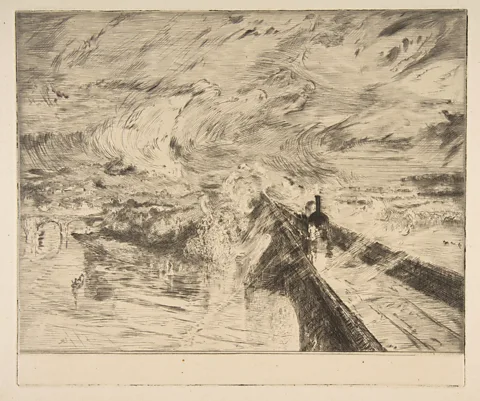 The Metropolitan MuseumFélix Bracquemond's La Locomotive, 1873, based on Turner's Rain, Steam and Speed, was displayed at the first Impressionist exhibition in Paris (Credit: The Metropolitan Museum)
The Metropolitan MuseumFélix Bracquemond's La Locomotive, 1873, based on Turner's Rain, Steam and Speed, was displayed at the first Impressionist exhibition in Paris (Credit: The Metropolitan Museum)In 2025 various exhibitions will celebrate the 250th anniversary of Turner's birth, from Walker Art Gallery in Liverpool (Turner: Always Contemporary), to Turner's House in Twickenham (Turner's Kingdom: Beauty, Birds and Beasts), and from the Yale Centre for British Art, Connecticut (JMW Turner: Romance and Reality) to Tate Britain (Turner and Constable). But to fully appreciate this extraordinary artist, it's important to grasp the true meaning of his masterpiece, The Fighting Temeraire.
Frequently it's been accepted as a melancholy image, a forlorn lament for past glories and a lost way of life. But this misses its essential point. The Fighting Temeraire is really about transformation and the inevitability of change rather than nostalgia. The most important lessons to learn from The Fighting Temeraire are about Turner's attitude and outlook. It embodies his refusal to be daunted by newness or enslaved by traditional artistic values. His quest to find the beauty and grandeur of modern experience, and leave the past behind, is magnificently on display in The Fighting Temeraire. And these qualities are truly his lasting legacy to modern art.
The 250th anniversary of JMW Turner's birth is on 23 April 2025.
--
If you liked this story, sign up for The Essential List newsletter – a handpicked selection of features, videos and can't-miss news, delivered to your inbox twice a week.
For more Culture stories from the BBC, follow us on Facebook, X and Instagram.
Art and designArtArt historyFeaturesWatch Shahmaran: The mythical symbol inspiring Turkish artists
Shahmaran: The mythical symbol inspiring Turkish artistsThe 'Shahmaran', half-woman and half-snake, is a mythical figure popular in the folklore of Turkey.
12 Jul 2024Art & Design What do we mean when we talk about 'Islamic art'?
What do we mean when we talk about 'Islamic art'?Art critic Alastair Sooke travels to Doha to discover some of the treasures of the Museum of Islamic Art.
19 Dec 2023Art & Design Blue Quran: A rare 1,000-year-old masterpiece
Blue Quran: A rare 1,000-year-old masterpieceArt critic Alastair Sooke learns about a masterpiece of the Islamic world at Doha's Museum of Islamic Art.
19 Dec 2023Art & Design Taiwan's last cinema poster painter
Taiwan's last cinema poster painterPartially blind, he vows to continue until he can no longer see.
9 Nov 2023Art The naked portrait covered up for centuries
The naked portrait covered up for centuriesArtemisia Gentileschi: Revealing the true beauty of a censored painting.
3 Nov 2023Art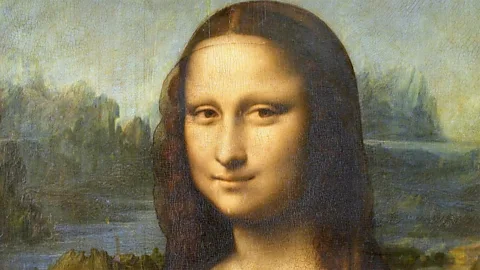 What’s behind Mona Lisa’s indescribable smile?
What’s behind Mona Lisa’s indescribable smile?Art critics explain why people see Mona Lisa’s smile in different ways.
19 May 2023Art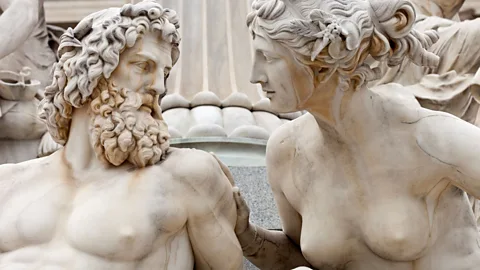 Chromophobia: Who stole the colour from classical art?
Chromophobia: Who stole the colour from classical art?The way we see ancient Greek and Roman sculpture isn't actually the way it was first created.
6 Sep 2022Art The world's oldest tattoo parlour
The world's oldest tattoo parlourThe Razzouk family are tattoo artists whose history of inking Christian pilgrims stretches back over 700 years.
10 Jun 2022Art The island utopia that became a social experiment
The island utopia that became a social experimentHow a remote island became a world-renowned art colony.
23 Feb 2022Art The microcosm and the macrocosm of Frida and Diego
The microcosm and the macrocosm of Frida and DiegoHow an iconic artist couple maintained an open marriage and inspired each other.
23 Feb 2022Art How the world's most creative groups came up with ideas
How the world's most creative groups came up with ideasThe often overlooked factor behind history's most innovative art, from the Sistine Chapel to the Bauhaus.
23 Feb 2022Art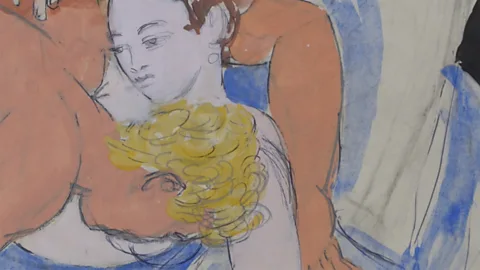 The £2m erotic drawings hidden from the world
The £2m erotic drawings hidden from the worldA massive haul of drawings by Bloomsbury Group artist Duncan Grant is finally made public.
23 Feb 2022Art How a virtual art class changed a man's life
How a virtual art class changed a man's lifeHow virtual art classes have helped students with learning disabilities during the pandemic.
23 Feb 2022Art 'We're reinventing the rules about naked pictures'
'We're reinventing the rules about naked pictures'Is it OK to look at paintings of sexual violence in a post #MeToo era?
23 Feb 2022Art The hidden treasure kept in China's Forbidden City
The hidden treasure kept in China's Forbidden CityA glimpse of a rare artwork before it’s hidden for three years in the Forbidden City
23 Feb 2022Art Unveiling the legend behind a mythical ancient ruler
Unveiling the legend behind a mythical ancient rulerA single piece of jade tells the story of mythical Chinese ruler Sage King Yu
23 Feb 2022Art The rare painting that can only be viewed for 30 minutes
The rare painting that can only be viewed for 30 minutesDigital imagery allows a rare 1000-year-old painting to be explored in an exciting new way
23 Feb 2022Art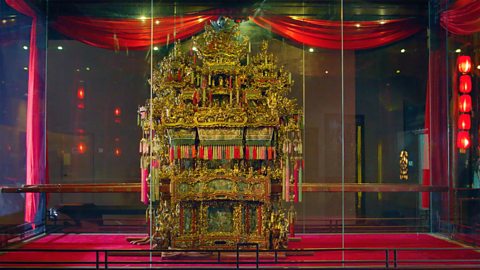 The chair that took 10,000 man-hours to create
The chair that took 10,000 man-hours to createThis elaborate chair took 10,000 hours to create, but what was its purpose?
23 Feb 2022Art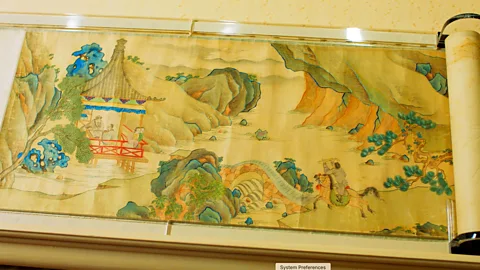 The woman who shaped history through silk
The woman who shaped history through silkLady Han’s unique needlework transformed the intricate art of silk embroidery
23 Feb 2022Art ‘Painting is very similar to a therapy session’
‘Painting is very similar to a therapy session’Charlie's sittings with Imara helped them through an incredibly poignant time in both of their lives.
23 Feb 2022ArtMore13 hrs ago Why is Finland such a 'happy' country?
Why is Finland such a 'happy' country?Finland has topped the World Happiness Rankings for the eighth year – but the real appeal for travellers lies in the country's values of balance, nature and everyday contentment.
13 hrs agoTravel15 hrs ago The unloved pollinators of the underworld
The unloved pollinators of the underworldNew research is showing just how much plants and crops rely on a host of darkness-dwelling creepy crawlies.
15 hrs agoFuture19 hrs ago Plan to restore Victorian window with painted mural
Plan to restore Victorian window with painted muralOwner of the Old School House asks the council for permission to paint a mural on 1860s window
19 hrs agoHereford & Worcester1 day ago What does 1776 mean for 2025?
What does 1776 mean for 2025?The BBC's Katty Kay speaks with Pulitzer Prize-winning author and historian Rick Atkinson as America marks 250 years since the beginning of the Revolutionary War.
1 day agoBusiness1 day ago Chriselle Lim's self-care guide to Seoul
Chriselle Lim's self-care guide to SeoulShe jets around the world for her high-profile beauty career, but her heart is in Seoul. Here are her top K-beauty experiences in town, from face lasers to body scrubs.
1 day agoTravelAP by OMG
Asian-Promotions.com |
Buy More, Pay Less | Anywhere in Asia
Shop Smarter on AP Today | FREE Product Samples, Latest
Discounts, Deals, Coupon Codes & Promotions | Direct Brand Updates every
second | Every Shopper’s Dream!
Asian-Promotions.com or AP lets you buy more and pay less
anywhere in Asia. Shop Smarter on AP Today. Sign-up for FREE Product Samples,
Latest Discounts, Deals, Coupon Codes & Promotions. With Direct Brand
Updates every second, AP is Every Shopper’s Dream come true! Stretch your
dollar now with AP. Start saving today!
Originally posted on: https://www.bbc.com/culture/article/20250415-jmw-turner-at-250-why-his-greatest-painting-the-fighting-temeraire-is-so-misunderstood?ocid=global_culture_rss
